Nameri National Park, Assam – Nature fills up human senses at Nameri
Nature fills up human senses at Nameri. The national park at the foothills of the Eastern Himalayas is home to a wide variety of flora and fauna, including tiger, elephant, leopard, bison, sambar, hog deer, wild boar, Himalayan black bear, capped langur and giant squirrel. However, spotting wildlife in the dense jungle is difficult. A plethora of reptiles and insects bears testimony to the bio-diversity of the region.
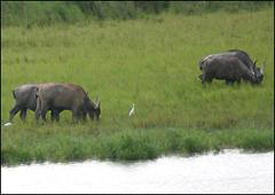 The semi-evergreen, moist deciduous forest spread over about 1,000 sq km is punctuated by narrow strips of open grassland along the Jia Bharali river, which provide ample opportunity for picnics. Rafting is possible in the river at certain times of the year. Jungle treks conducted by the wildlife department present the best opportunity of exploring this fascinating land. The monotonous buzz of insects is occasionally broken by the call of a bird. The cracking sound of the twigs can be heard on the forest floor while walking. Nature can be seen, smelt, heard and felt here.
The semi-evergreen, moist deciduous forest spread over about 1,000 sq km is punctuated by narrow strips of open grassland along the Jia Bharali river, which provide ample opportunity for picnics. Rafting is possible in the river at certain times of the year. Jungle treks conducted by the wildlife department present the best opportunity of exploring this fascinating land. The monotonous buzz of insects is occasionally broken by the call of a bird. The cracking sound of the twigs can be heard on the forest floor while walking. Nature can be seen, smelt, heard and felt here.
Nameri, which shares its northern boundary with Pakhui Tiger Reserve of Arunachal Pradesh, has become popular with bird-watchers. More than 300 species of birds have been spotted here, including four species of hornbill and an abundance of hill mynas, barbets, babblers, bulbuls, plovers, Black Necked Storks, king vultures and fishing eagles. The endangered white winged wood duck has also been seen.
Multi-coloured butterflies, dragonflies and lantern flies are common. An Atlas Moth with a wingspan of 10 inches was recently spotted in Nameri National Park.
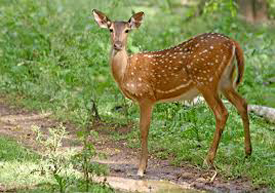 About 30 km away is Bhalukpong, on the border between Assam and Arunachal Pradesh. Permits to enter Arunachal Pradesh are issued in this town. The hills of Arunachal start rearing their heads from Bhalukpong. The Jia Bharali river can be seen in a different avatar here.
About 30 km away is Bhalukpong, on the border between Assam and Arunachal Pradesh. Permits to enter Arunachal Pradesh are issued in this town. The hills of Arunachal start rearing their heads from Bhalukpong. The Jia Bharali river can be seen in a different avatar here.
From a base in Bhalukpong, WWF India recently conducted a survey of plants above the ground. The study by North Bank Landscape team of WWF India revealed that the area is one of the richest in the world in Plant Functional Type and second only to Sumatra in Plant Functional Complexity. The report concluded that the area is “one of the richest and most threatened reservoirs of plant and animal life in the world”.
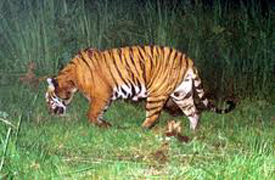 The Eco Camp in neighboring Potasali village provides with the experience of living amid nature. Guests have to put up in jungle tents and Chung cottages on the sprawling green compound. We may find a frog staring while taking a bath in the outhouse or a giant moth glaring from the corner of the tent while entering inside, but these only remind us that we are in the heart of the jungle.
The Eco Camp in neighboring Potasali village provides with the experience of living amid nature. Guests have to put up in jungle tents and Chung cottages on the sprawling green compound. We may find a frog staring while taking a bath in the outhouse or a giant moth glaring from the corner of the tent while entering inside, but these only remind us that we are in the heart of the jungle.
The camp provides facilities for rafting, angling, bird watching and jungle trekking.
How to go ?
We can take a train or flight to Guwahati and then hire a car to Nameri. It is 264 km by road.
Where to stay ?
The Eco-camp at Potasali, which has 10 twin-bedded jungle tents and cottages with attached toilets. The camp canteen provides basic food.
Contact: Camp Director, Eco-camp,
Potasali (Nameri Tiger Reserve),
Sonitpur district, Assam.
Ph: 09854019932.
Booking : www.nivalink.com/hotel/nameriecocamp
The tourism department has tourist lodges in Tezpur and Bhalukpong (21 km from the park).
Website: www.assamtourism.org
The best time to visit is November to March.
To visit the national park, contact:
Divisional Forest Officer,
Western Assam Wildlife Division,
Dolabari, Tezpur or Range Officer,
Nameri National Park, Potasali.

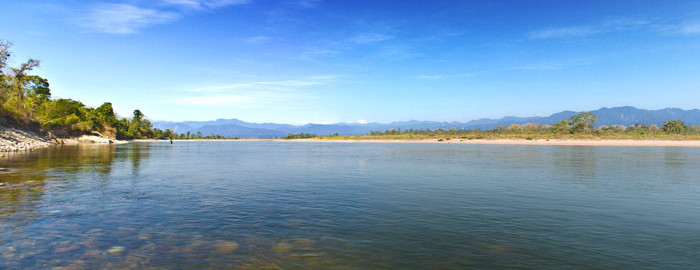
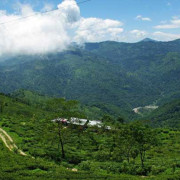
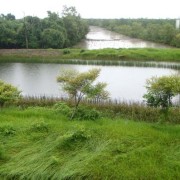
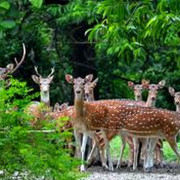
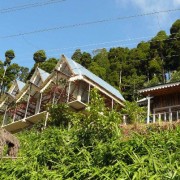
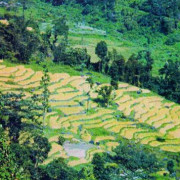
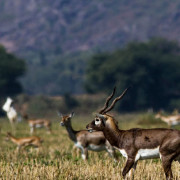
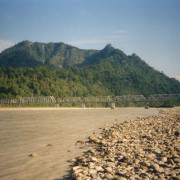
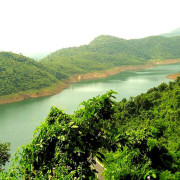


Leave a Reply
Want to join the discussion?Feel free to contribute!